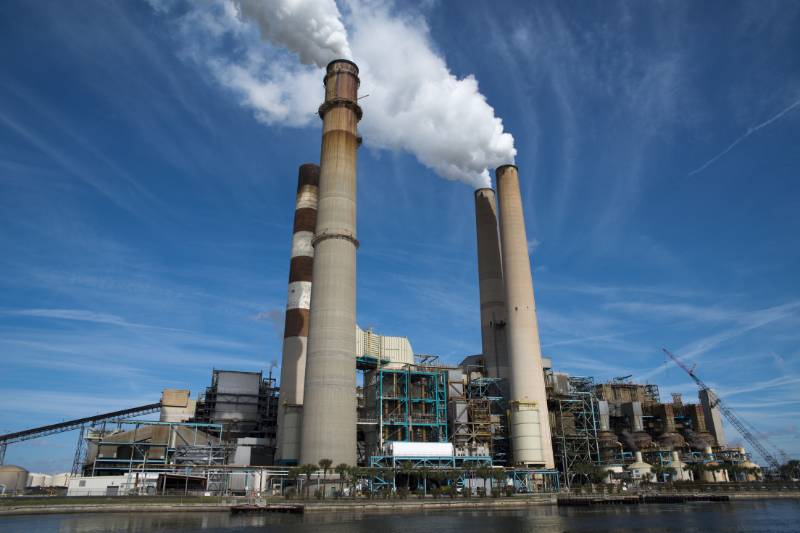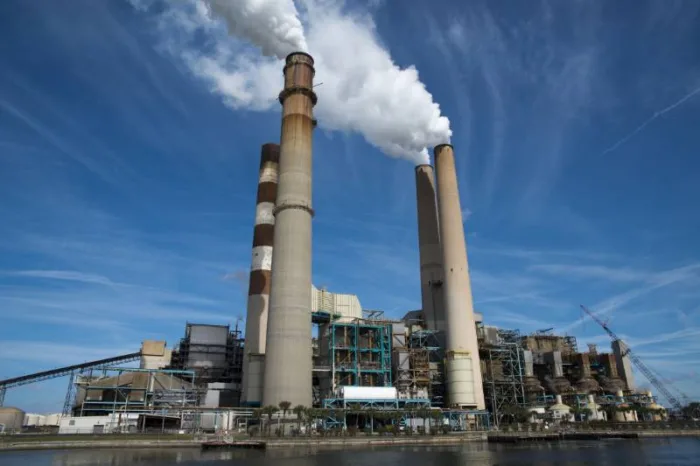Key takeaways
- Industrial facilities offer spaces to conduct manufacturing, warehousing, research, and more.
- Maintain your industrial facility by performing regular inspections, implementing a preventative maintenance program, and installing robust security features.
- Treatment plants, data centers, and power plants are just a few examples of industrial plants.
- Key features of a physical plant include automation, compliance, and environmental controls.

Industrial facilities support all industries through the various operations they conduct. Due to their environments and flexible capabilities, industrial plants prompt a lot of questions.
For that reason, this guide will cover everything you need to know about industrial facilities. You’ll discover what these facilities are, what they do, and the most common types of physical plants. In addition, you’ll learn the key features of these facilities and how to maintain them.
This guide covers:
- What are industrial facilities?
- What are industrial plants used for?
- Types of industrial facilities
- Key features in industrial plant design
- How to maintain an industrial facility
- Industrial facility FAQs
What are industrial facilities?
Industrial facilities are dedicated buildings designed for large-scale production, storage, or testing of manufactured goods and materials.
These facilities consist of multiple buildings equipped with specialized machinery tailored to specific manufacturing processes. As such, equipment may be automated and maintained by staff or operated by workers trained in specific areas of production, such as assembly, fabrication, or refining.
What are industrial plants used for?
Industrial plants are used for a wide range of processes, from producing goods to generating power. Regardless of their specialty, they are essential across all areas of production that drive our economy and daily lives.
Here are a few examples of industrial processes you may find at these facilities:
- Refining. Refining involves processing raw materials to convert them into more usable forms. For example, oil refineries process crude oil into gasoline or other usable petroleum products.
- Power generation. These plants produce electricity through various means, including coal, natural gas, nuclear, hydroelectric, wind, and solar power, which provide energy for homes and businesses.
- Chemical processing. Industrial facilities can transform raw chemicals into usable products, such as pharmaceuticals, plastics, and fertilizers, through complex chemical reactions and mixing processes.
- Food production. An industrial plant can manufacture and produce food products from raw agricultural materials, such as turning milk into cheese or brewing beer.
- Mining. These operations extract and process minerals, ores, and other materials from the earth. Activities may involve crushing or refining to produce usable materials like metal, which are used later in manufacturing.
- Textile production. Industrial facilities can produce textiles by creating fabrics or clothing from raw fibers. They may use a variety of methods, such as spinning, weaving, dyeing, and finishing, to produce textile products.
Types of industrial facilities
Industrial facilities serve many purposes, but you’ll find they typically fall into one of the following categories.
The most common types of industrial facilities include:
- Manufacturing buildings
- Warehouses and distribution centers
- Power plants
- Treatment plants
- Flex buildings
- Data centers
- Research and development buildings
1. Manufacturing buildings
Manufacturing facilities house production lines, heavy machinery, and skilled labor that are necessary for creating products.
These buildings typically feature large, open spaces, high ceilings, and robust infrastructure to support continuous production processes. Manufacturing buildings also require dedicated areas for different stages of the manufacturing process. Of course, manufacturing facilities require offices or administrative areas to ensure seamless operations.
Manufacturing facility examples include:
- Automotive assembly
- Metal fabrication shops
- Food processing plants
- Chemical manufacturing facilities
- Textile mills
- Semiconductor fabrication plant
2. Warehouses and distribution centers
These facilities are essential for storing and distributing goods. Warehouses primarily serve as storage hubs, featuring expansive open areas with robust shelving units to maximize capacity. Moreover, warehouses can incorporate climate-controlled or cold storage facilities to handle more sensitive materials like perishable foods.
Conversely, distribution centers focus on efficiently sorting and shipping products stored at warehouses. They use advanced inventory management systems, conveyor belts, and loading docks to streamline and expedite the process.
3. Power plants
Power plants generate electricity for crucial infrastructure, homes, businesses, and other industrial operations. These facilities specialize in fossil fuels, nuclear energy, or renewable energy sources like solar or wind. Despite the energy used, these facilities offer unique designs, including specialized machinery and safety measures to handle high-energy outputs and potential hazards.
4. Treatment plants
Treatment plants are essential for processing water, wastewater, and other materials. Treating these materials and other chemicals is important for the public’s health and safety, and water treatment ensures clean drinking water. In contrast, wastewater treatment ensures that water returning to the environment is not contaminated.
In addition, chemical treatment neutralizes chemical waste, which could be harmful to the environment. For that reason, chemical treatment is highly regulated and must comply with strict state and federal laws.
5. Flex buildings
Also known as flex space buildings, these facilities offer versatile spaces combining offices, manufacturing, storage areas, labs, data centers, and more. As a result, flex buildings are more suitable for companies requiring multifunctional environments. Flex buildings can be configured to meet changing needs, making them perfect for startups and growing businesses.
6. Data centers
Unlike other facilities on our list, data centers protect and house digital and physical assets such as servers and telecommunication equipment. Data centers are equipped with advanced cooling systems to prevent overheating and robust security measures to protect the sensitive data they handle. Overall, they are critical to today’s digital infrastructure by enabling data storage, processing, and communication throughout the world.
7. Research and development buildings
R&D buildings are important for innovation and product development, so they require robust laboratories, testing areas, and office spaces. Scientists and engineers will develop and test new products and technologies for numerous industries within these spaces. Due to their nature, these facilities require specialized equipment, environmental controls, and safety features for new developments.
Key features in industrial plant design
The design of industrial plants must accommodate the specific needs of the operations they support.
So, here are the key features all industrial plants must incorporate into their design:
- Sustainability. Industrial plants are increasingly integrating sustainable practices to reduce environmental impact. After all, many of these facilities significantly impact climate change, so energy-efficient lighting, water recycling systems, and waste management strategies aim to minimize ecological footprints.
- Security features. Ensuring the safety of personnel, equipment, and property is paramount. Industrial plants should incorporate robust security amenities, such as cloud-based access control systems, security cameras, and perimeter security measures to mitigate risks and prevent unauthorized access.
- Automation. The adoption of automated systems enhances efficiency and productivity, which is critical in industrial operations. This includes robotic assembly lines, automated inventory management, and AI-driven predictive maintenance, which reduce human error and optimize workflows.
- Environmental controls. Controlling environmental factors such as temperature, humidity, and air quality helps protect materials and ensure personnel health. Thus, plants utilize HVAC systems, ventilation controls, and air filtration technologies to maintain optimal working conditions and preserve product quality.
- Specialized infrastructure. Industrial plants often require specialized infrastructure tailored to their specific operations. This can include heavy-duty flooring for manufacturing areas, high-capacity electrical systems to support machinery, and ergonomic workstations designed for worker safety and comfort.
- Compliance features. Adherence to regulatory standards and industry-specific requirements is non-negotiable. Industrial plants incorporate compliance features such as safety signage, emergency response protocols, security camera systems, and regular inspections. Therefore, facilities can ensure legal compliance and continual operation.
Watch how access control systems work:
How to maintain an industrial facility
Industrial facility management involves a variety of responsibilities, but maintaining the plant is one of the most critical.
Here is what industrial facilities maintenance should include:
- Inspections and audits. Conduct frequent inspections to identify wear and tear, potential hazards, and areas needing improvement. Meanwhile, routine audits ensure your facility complies with safety regulations and standards, helping prevent accidents, legal fees, and costly downtime.
- Preventative maintenance. Develop a preventative maintenance schedule for machinery and facility infrastructure. That way, you can prevent unexpected equipment breakdowns and extend the lifespan of machinery. You should also consider using a building management system and IoT sensors to assist you in identifying areas where your facility requires maintenance.
- Staff training and development. Provide ongoing training for employees on maintenance procedures, safety protocols, and the use of equipment. Plus, you should encourage staff to report any maintenance issues or safety concerns promptly to prevent hazards from going unnoticed.
- Documentation. Maintain updated records of maintenance activities, inspections, and repairs. While documentation is important for many reasons, it primarily helps your physical plant comply with regulations. However, you’ll also benefit from greater quality control standards, easier training and onboarding, and preserving knowledge.
- Security measures. Ensure all facility safety protocols are updated and enforced, such as fire safety or emergency response plans. At the same time, implement an access control system or intercom system, like ButterflyMX, to simplify access management at your facility.
Industrial facility FAQs
- What are examples of industrial facilities?
- Does industrial mean factory?
- What are industrial areas called?
- What makes a building industrial?
- What’s the difference between industrial and commercial?
What are examples of industrial facilities?
Generally, examples of industrial facilities include warehouses, storage facilities, refineries, mines, R&D centers, and server farms.
More specifically, a real-world example of an industrial facility is the Boeing Factory in Everett, Washington. This facility is used to assemble airplanes, so it requires significant space. The Boeing Everett Factory is the world’s largest building by volume at 4.2 million square feet, covering almost 100 acres.
Does industrial mean factory?
Not exactly. While factories are a type of industrial facility, the term “industrial” refers to a broader range of buildings used for producing, storing, and researching at a large scale.
What are industrial areas called?
Industrial areas are often referred to as industrial parks, zones, or districts. These areas are specifically designated for industrial activities and are typically located away from residential areas to minimize disruptions and enhance safety.
What makes a building industrial?
Industrial buildings are characterized by their ability to support industrial operations, such as housing large machinery or undertaking lengthy processes.
What’s the difference between industrial and commercial?
Industrial buildings are used for manufacturing and storage, while commercial buildings are used for business activities such as retail and office space. Industrial facilities often require specialized infrastructure and equipment to support production processes, whereas commercial buildings are designed for customer interaction and administrative functions.

Get your free quote!
Fill in the form below, and we'll email you right back.
Want a free quote?
Fill in the form below, and we'll email you right back.
You’ll be redirected shortly...







